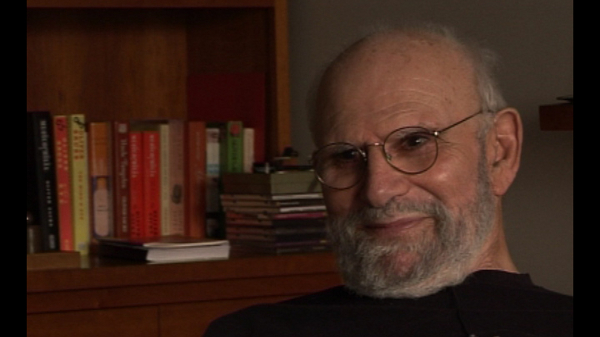NEXT STORY

The epicentre of the Lytico-Bodig disease
RELATED STORIES

NEXT STORY

The epicentre of the Lytico-Bodig disease
RELATED STORIES


|
Views | Duration | |
|---|---|---|---|
| 251. Amnesic Gary | 180 | 07:27 | |
| 252. Naming the book An Anthropologist on Mars | 289 | 01:13 | |
| 253. Glad to be - roughly - healthy at an old age | 234 | 03:34 | |
| 254. Hoping my work has helped others | 173 | 00:25 | |
| 255. The offer of a remote neurological adventure | 179 | 02:18 | |
| 256. Arriving in Guam: Are the cycads responsible for Lytico-bodig... | 335 | 01:19 | |
| 257. The epicentre of the Lytico-Bodig disease | 298 | 03:42 | |
| 258. First finding out about the colour blindness of Pingelap | 196 | 02:01 | |
| 259. The Island of the Colourblind | 187 | 01:59 | |
| 260. Buying a house while swimming round City Island | 1 | 740 | 02:41 |


I arrived in Guam, I was met by John Steele. A... a rather eccentric-appearing figure in the airport. It was swelteringly hot and everyone was in colourful shirts and shorts. John was fully and nattily dressed and had a tie and a straw hat, and... and a sports car. And, anyhow, we drove off where, as we were driving, he filled me in about the history of Guam and he also pointed out stands of cycads, a very primitive tree which had originally forested the whole of Guam and there were still big stands of cycads. And he pointed this out because he knew that I was interested in cycads as well as in neurology. And indeed I think he’d used a phrase that I could come to Guam either as a cycadological neurologist or a neurological cycadologist, but in particular the cycads were supposed to be responsible for the strange disease on Guam.
Oliver Sacks (1933-2015) was born in England. Having obtained his medical degree at Oxford University, he moved to the USA. There he worked as a consultant neurologist at Beth Abraham Hospital where in 1966, he encountered a group of survivors of the global sleepy sickness of 1916-1927. Sacks treated these patients with the then-experimental drug L-Dopa producing astounding results which he described in his book Awakenings. Further cases of neurological disorders were described by Sacks with exceptional sympathy in another major book entitled The Man Who Mistook His Wife For A Hat which became an instant best seller on its publication in 1985. His other books drew on his rich experiences as a neurologist gleaned over almost five decades of professional practice. Sacks's work was recognized by prestigious institutions which awarded him numerous honours and prizes. These included the Lewis Thomas Prize given by Rockefeller University, which recognizes the scientist as poet. He was an honorary fellow of both the American Academy of Arts and Letters and the American Academy of Arts and Sciences, and held honorary degrees from many universities, including Oxford, the Karolinska Institute, Georgetown, Bard, Gallaudet, Tufts, and the Catholic University of Peru.
Title: Arriving in Guam: Are the cycads responsible for Lytico-bodig disease?
Listeners: Kate Edgar
Kate Edgar, previously Managing Editor at the Summit Books division of Simon and Schuster, began working with Oliver Sacks in 1983. She has served as editor and researcher on all of his books, and has been closely involved with various films and adaptations based on his work. As friend, assistant, and collaborator, she has accompanied Dr Sacks on many adventures around the world, clinical and otherwise.
Tags: Guam, Lytico-bodig disease, John Steele
Duration: 1 minute, 19 seconds
Date story recorded: September 2011
Date story went live: 02 October 2012